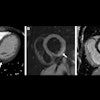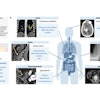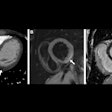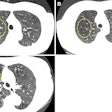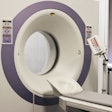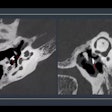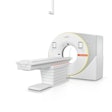CT should not be used routinely to evaluate patients with suspected pulmonary embolism (PE); instead, they should be evaluated using clinical guidelines, according to a September 29 paper in the Annals of Internal Medicine. Using CT too soon results in unnecessary harm and expense, concludes the American College of Physicians (ACP) report.
ACP's guidelines committee reviewed the available literature in an effort to determine why testing for PE, especially with CT, has spiked in recent years without a corresponding improvement in patient outcomes. It recommends stratifying every patient with suspected PE based on the clinical probability of disease according to well-validated prediction rules.
"There's a stepwise approach where the very first thing that needs to happen is risk stratification for the patient," said lead author Dr. Ali Raja from Massachusetts General Hospital in an interview with AuntMinnie.com. "And that just basically means that we're individualizing diagnosis and treatment of the patient based on a couple of well-validated rules."
PE prediction rules
Physicians have two sets of rules for predicting PE, the Wells and Geneva criteria, both of which are considered equally accurate, Raja wrote, along with Dr. Jeffrey Greenberg, Dr. Amir Qaseem, PhD, and colleagues (Ann Intern Med, September 29, 2015).
A third set of rules, known as the Pulmonary Embolism Rule-Out Criteria (PERC), was developed specifically to help physicians identify patients with a low pretest probability of PE, for whom the risks of testing, including a D-dimer plasma level test, outweigh the risk of PE, they wrote.
The PERC guidelines are really the newest of these rules; they look specifically at fast heart rates, low oxygen saturation, the coughing up of blood, or a history of venous thromboembolism, Raja said. Patients with a low pretest probability of PE who meet all eight PERC criteria have an extremely low likelihood of the condition, at 0.3%, and no further testing is required.
"It's really clinical, and it's based on the signs and symptoms the patient presents and the patient's individual history," he said.
On the other hand, smaller PEs in the main or branching pulmonary arteries that are diagnosed on CT without specific signs, symptoms, and risk factors may not actually be harmful to the patient.
Despite strong evidence backing the clinical guidelines, they are not routinely followed in practice, the authors noted. Meanwhile, CT has become the predominant imaging modality used to diagnose PE, but there is no evidence that increased use of the scans has improved patient outcomes. In fact, the evidence suggests that most PE diagnosed with CT is less severe. If more CT is being performed and PE being diagnosed without a corresponding change in mortality, then maybe CT isn't necessary for every little clot.
"The incidence of PE diagnosed on CT continues to increase," Raja said. "But the mortality from these PEs hasn't changed."
The lack of increased mortality with increased PE diagnosis also suggests that the use of CT for these smaller clots isn't cost-effective, the group wrote.
Getting to testing
If risk stratification reveals that the patient needs a D-dimer measurement or even further testing with CT, "then they should have that absolutely," Raja said. "All we're asking is that this not be a one-size-fits-all approach, but simply individualized treatment to particular patients."
There are many reasons behind overtesting; for example, there may be insufficient patient-physician communication about individual risk factors and how they fit into the decision algorithms. Patient-centered communication takes more time, but studies have shown it is associated with the use of less diagnostic testing.
"Physicians will often say they are thinking of PE, which is very hard to diagnose," and then they will immediately decide to order a CT scan to definitively diagnose or exclude PE, Raja said.
Because PE can be life-threatening, clinicians may feel they need to rule it out even if the likelihood is very low. In addition, some physicians may not be comfortable with the clinical criteria. Defensive medicine also factors into the equation to perform a CT scan in patients with a very low probability, but there are ways to address that, too, as has occurred in his Boston institutions, Raja said.
"For example, here at Brigham and Women's and Massachusetts General hospitals, we have an institutional policy that says this is what we do," he said. "And if you do this and risk-stratify your patient, that is exactly in line with our policy based on best practices evidence, and we will back you up."
It doesn't guarantee that the institution won't be sued, but it does put the weight of the institution behind the clinician's decision, he said.
Raja said he hopes the effort for better adherence to clinical guidelines will lead to real improvements in clinical practice.
"The ACP is taking this on as the largest specialty-specific organization outside of the American Medical Association," he said. "The goal is to get all of the internists who see these patients in primary care and to remind them that this is not a one-size-fits-all approach."
